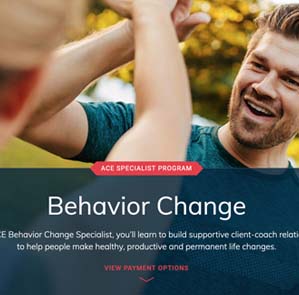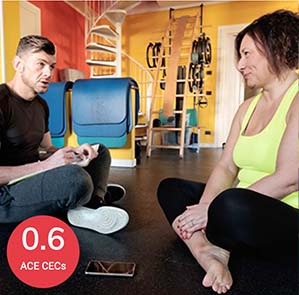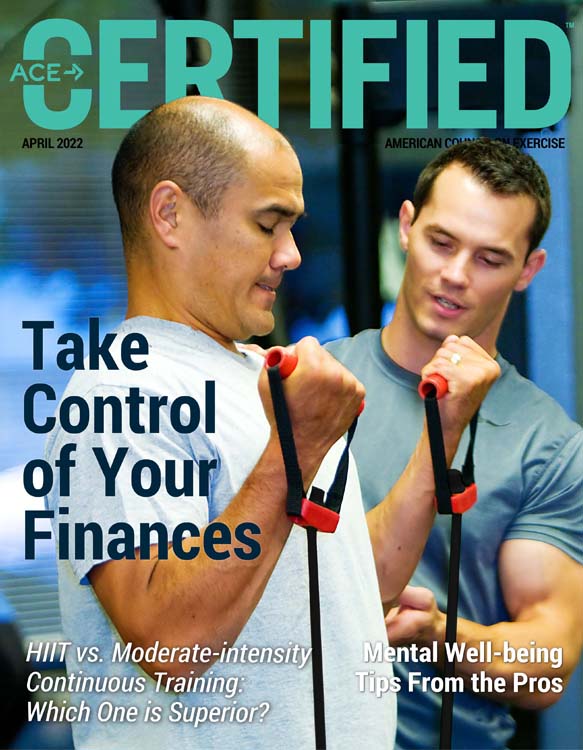
The COVID-19 global pandemic forever altered the landscape of the helping professions and those in various allied healthcare fields, forcing many of us to make immediate and difficult changes to the ways in which we live, learn and work.
Behavior change is a process rather than a series of isolated events or quick decisions that lead to sustainable outcomes. At the start of the pandemic, the necessary process of change was absent and we, including those we serve in this industry, were unable to gradually adjust to a new way of life or develop a reasonable balance. The scales were abruptly shifted, and our personal, professional, educational and social lives became indistinct from one another.
As we reflect, we grow in our understanding as to why so many unanticipated challenges arose. The effects of social isolation and distancing, working, learning and teaching from home, online holiday celebrations and events, and the loss of loved ones are profound and beyond what we could have reasonably (or accurately) predicted.
The Mental-health Impact
According to a survey conducted through a shared effort between the Cleveland Clinic and PARADE Magazine, the pandemic triggered significant mental health and well-being concerns, including addiction, depression, social isolation and general stress-management challenges. These challenges seemed to affect the younger populations more dramatically than others.
The survey found that 55% of respondents reported a rise in mental health issues since the start of the pandemic; 74% of respondents were 18 to 34 years old. The four most reported mental-health issues among respondents were stress (33% overall; 42% of 18- to 34-year-olds), anxiety (30% overall; 40% of 18- to 34-year-olds), depression (24% overall; 31% of 18- to 34-year-olds) and loneliness or isolation (24% overall; 31% of 18- to 34-year-olds).
Further, respondents reported feeling extremely and unmanageably overwhelmed by the constantly changing information surrounding the pandemic and public safety protocols. As a result, 41% stated they stopped paying attention to new information.
Tangential to mental health concerns but related to general wellness was the unintended consequence of what is referred to as “pandemic-induced hesitation.” Although clinics, medical practices and other primary care provider entities ensured the safety of their patients during the pandemic, 38% of respondents (more women than men) indicated that they avoided seeking medical care for health-related concerns. This finding adds a layer to the already growing number of preventable or treatable health concerns. How much did physical, in addition to mental, health suffer? The long-term effects will take time to identify, and we may never attain a quantifiable result.
Research continues to grow in areas related to how mental health and general well-being were affected by the global pandemic. A study of young adults in the U.S. revealed that they experienced high rates of loneliness during the pandemic, with approximately one-third of participants reporting elevated levels of depression, anxiety and post-traumatic stress disorder (PTSD) symptoms. Other research suggests that these types of responses weren’t exclusive to the U.S. For example, a study examining the psychological and behavioral responses of 400 Pakistani residents to COVID-19 found increased anxiety levels and mental health issues among respondents. In fact, 83% reported feeling anxious when a family member would leave the house, while 62.5% reported feeling anxious every day.
Unexpected Positive Outcomes
While research has consistently demonstrated an association between the pandemic experience and feelings of anxiety, depression, fear and general stress, there were some bright spots to be found. For example, the Cleveland Clinic’s survey revealed that 62% of the respondents reported spending more time outdoors/experiencing nature, having better sleep patterns, starting or modifying an exercise program and making healthy dietary changes. Twenty-eight percent noted an increase in their exercise frequency. Further, 68% of those surveyed noted a greater awareness of their health. This is an interesting contrast to the finding that more than 40% were overwhelmed by the changing information and stopped investing in that information. Perhaps we unconsciously developed a greater intuitive sense as we faced a novel health threat, but that is only speculation.
Through the Lens of Health Coach Professionals
To bring the experience closer to home, I interviewed three certified health coaches, each with a unique perspective on the questions asked. In thinking about (and observing) the impact of the pandemic on all aspects of well-being, but particularly in relation to mental health, I wanted to seek to better understand:
- How the mental well-being of those in a helping profession, such as health coaches, has been impacted and challenged
- Strategies coaches have employed to bring harmony to their “new normal”
- Tips for other professionals on how they can interact and empathize with their clients’ adaptations to a “new normal” without stepping outside their scope of practice
“As with most things, how we choose to think about them informs and impacts what we do and feel about them,” explains Lee Jordan, MS, NBC-HWC, SHRM-SCP. “Mental well-being, our health-coaching practice and the COVID pandemic are no different.” Jordan shares insight from Viktor E. Frankl, the revered psychiatrist, author of Man’s Search for Meaning, and Auschwitz Nazi death camp survivor. “Forces beyond your control can take away everything you possess except one thing, your freedom to choose how you respond to a situation. You cannot control what happens to you in life, but you can always control what you feel and do about what happens to you.”
Of course, Jordan is not suggesting we view the pandemic or how we experienced it in a way that creates false or toxic positivity. Rather, he urges that we seek “an acceptance of the difficult, perhaps 'unfair,' reality of a situation while seeking a path through, buoyed by Frankl’s revelation that your choice of how you frame it in your mind and respond.” This, he says, “keeps us free.” Thoughts, like words, have tremendous power.
Chris Gagliardi, Scientific Education Content Manager at ACE, shares a different perspective. “I think overall well-being has been challenged over the past few years. The Centers for Disease Control and Prevention (CDC) describes well-being as the presence of positive emotions and moods, the absence of negative emotions, positive functioning, fulfillment, and satisfaction with life. The CDC also mentions several determinants of well-being, which include good health, positive social relationships, and access to and availability of basic resources such as income and shelter. In looking at these determinants of well-being and considering the impact of COVID on these determinants, it is no surprise that well-being has been impacted.”
Stated simply, when we examine mental well-being, people feel well when they are enjoying life, working productively, and actively engaging in life, events and their communities. For many, the pandemic took away the ability to interact and engage face-to-face (in most cases) and work as productively as they did prior to the pandemic. This relates directly to the role helping professionals have. “For those in helping professions,” says Gagliardi, “not only are they facing their own challenges brought on by the pandemic and the measures put in place to attempt to decrease the negative impact of the virus, but they are also dealing with more people who are struggling with more aspects of well-being at the same time. This can be exhausting both mentally and physically.”
Like Jordan and Gagliardi, Suzanne Stringer, MS, DipACLM, CHES, Certified Lifestyle Medicine Professional, Health Coach and Personal Trainer, believes the COVID crisis evoked feelings of loneliness, stress and anxiety—among both professionals and their clients. “When coaches experience these negative emotions, it not only impacts them but their interactions with clients as well,” explains Stringer. “Negative emotions are messages indicating that needs are not being met and coaches can help clients connect to those needs by asking questions to create awareness. How are you feeling in this moment? The client may respond that they are feeling overwhelmed by the demands being placed upon them as they work from home while supervising their children. Now, the coach can acknowledge those feelings and connect them to a universal need with a reflection: 'You are feeling overwhelmed and need more balance in your life to feel calm and rested. Is that right?' Helping clients identify their needs helps them become unstuck from their negative emotions so they can move forward to cultivate positive emotions, thereby creating emotional balance.”
Strategies and Tips for Professionals From Professionals
Evidence tells us that the pandemic has been exhausting and challenging in more ways than we could’ve imagined, but these challenges are not insurmountable. We can adapt, overcome and thrive in the face of those challenges. Try these suggestions and tips as you move forward in your own practice.
Jordan focuses on the Three C’s of Cognitive Behavior Coaching. As a health coach, you can apply this strategy both personally and professionally. “When an event occurs, and we begin to feel overwhelmed, we “catch” the thought, becoming aware and reflecting on what we are thinking. Next, we “check” the thought by examining it for validity, accuracy and helpfulness. Lastly, we “change” the thought, reshaping and seeking to align it through the lens of our beliefs and values. Notice that this is different from ignoring or burying a thought; instead, we are honest and agile with this final step.” Using this approach helps us, as health and exercise professionals, acknowledge our cognitive distortions and reframe them into productive thoughts. As we serve our clients, we can integrate this strategy into our sessions and client interactions to help clients do the same. It’s a win-win.
Gagliardi offers additional strategies and tips for professionals to apply directly in their personal lives as well as in their sessions with clients. First, he suggests increasing the emphasis on self-care. Rest when you need to rather than when you get to a point that you have to. The same goes for our clients, so remind them that rest is restorative.
Here are some additional strategies Gagliardi recommends for professionals:
- Meet your clients where they are (literally and figuratively). People’s level of comfort and concern about health has changed during the pandemic. Through the creative use of technology, our clients can still enjoy various aspects of life, but perhaps in a new way.
- Prioritize what is most important in life. For many, the reality of the pandemic opened their eyes to the fragility of life and awakened a greater appreciation for the things that truly matter. A reasonable work-life balance is an important component of finding harmony.
- Approach every interaction with clients as an opportunity to brighten their day. In a world that seems to have been filled with doom and gloom for so long, now is the time to walk together with your clients toward the light at the end of the tunnel as they progress along their health and wellness journey.
To further support each other as professionals and the clients we serve, Stringer recommends practicing mindfulness and gratitude. “Positive emotions such as gratitude and hope can be cultivated with mindfulness practices that are based on neuroscience. These types of meditations help individuals develop a growth mindset and become more self-aware, allowing them to see how their thoughts and emotions shape how they view the world,” explains Stringer. “Mindfulness practices benefit our mental and physical health as well as improve our interactions with others by [helping us become] less judgmental and more accepting.” Several digital apps are available to consumers (and professionals) to help with this process. Take the time to research available apps and find one that works for you and those you serve.
It is likely we will continue to experience the effects of the COVID-19 pandemic for the foreseeable future. Now is the time to reevaluate how we perceive mental health and how we work together to heal the varying levels of trauma so many of us experienced. We may never “return to normal” because the normal we once knew no longer exists. While there have been significant challenges and struggles, we have also managed to reveal the beauty in the struggle. We are now more acutely aware of the importance of acknowledging the value of, and prioritizing the need for, mental health.
Expand Your Knowledge
 |
This first-of-its-kind program equips you with the comprehensive science and advanced coaching methods you need to help everyone—from everyday people who are stressed out and struggling to see results, to elite athletes and top performers who are seeking that extra edge—achieve restorative sleep, manage daily stressors and learn how to recover in ways they never knew existed. With a strategic, science-based approach, you’ll move beyond exercise and nutrition, and coach your clients holistically—as you help them optimize their sleep, better manage stress and recover more effectively so they can perform their best and face anything that life throws at them.
|
 |
Any fitness, healthcare or allied health professional who wants to effectively guide their clients to their goals will benefit from this specialization. You will gain crucial communication skills to foster effective client–coach relationships and will learn cognitive behavioral coaching to help your clients reach their potential. Upon completion of the program, you will own critical skills that will elevate your profile as an exercise or health professional.
|
 |
Effect and inspire positive lifestyle change within your clients by applying behavior change strategies. Whether you are coaching clients in chronic pain or stress management, this course bundle has you covered. Learn the latest techniques and strategies to work more effectively with your clients so they can establish healthy habits that last a lifetime.
|





 by
by 





